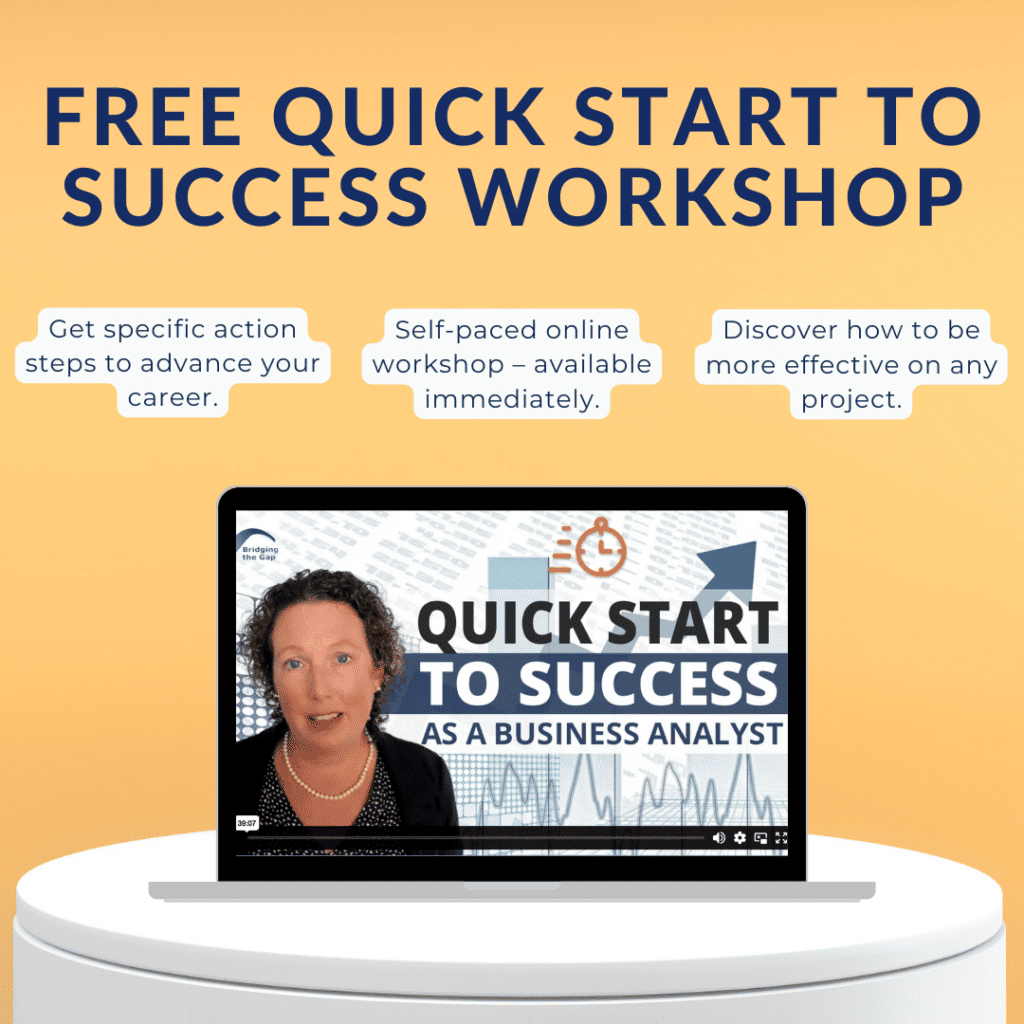There is one incredibly important thing to do first on ANY project…
⛅ Especially if you are in an ambiguous role like being a “Business Analyst.”
💯 Even if you’ve done this 100 times before.
🆕 Especially if it’s your first role.
😭 And even more so if it’s your team’s first time working with a business analyst.
👇 This is it.

If you are starting a new project as a business analyst…
First of all, congratulations and thank you.
You are amazing because we need you so much.
But the first thing I would recommend you do is to clarify your role. Roles are so different and no two business analysis roles is exactly the same. So you want to bring best practices and a structure and a way of doing business analysis that really works for you and is grounded in best practices.
But you also want to understand what does your manager think of this role.
- What about your technical stakeholders?
- What about your business stakeholders?
- What is your project manager’s perspective?
Understand all of these perspectives and what their expectations are.
And, where necessary, you might need to adjust your role to suit their expectations, or you might need to shift their expectations to suit your role.
So very first thing to do on a project – clarify your role. I would love to hear from you in the comments.
How do you set expectations and clarify your role at the beginning of a project? That’s super important?
Frequently Asked Questions
1. What is the most important first step for a business analyst starting a new project?
The most important first step for a business analyst starting a new project is to clarify your role. Business analysis roles can vary greatly between projects, so it’s essential to understand the expectations of your manager, technical stakeholders, business stakeholders, and the project manager. Adjust your approach based on these expectations or help shift their understanding to better fit your role.
2. Why is it important for a business analyst to align their role with stakeholder expectations?
Aligning your role with stakeholder expectations is crucial because it ensures smooth collaboration and reduces misunderstandings. Each stakeholder may have different ideas of what a business analyst should do, so engaging stakeholders and clarifying expectations early on helps you meet their needs while still following best practices in business analysis.
How can a business analyst clarify their role with a project manager?
To clarify your role with a project manager, have an open conversation about what they expect from you during the project. Ask specific questions about the scope of your responsibilities, how they envision you interacting with the team, and any key requirements documentation. This will help ensure that you are on the same page and can effectively support the project’s goals.
What should a business analyst do if stakeholder expectations differ from their role?
If stakeholder expectations differ from your role, you may need to adjust how you work or help shift their expectations. This can involve educating stakeholders about the best practices of business analysis or finding a middle ground that allows you to meet their needs while maintaining effective analysis practices. Clear communication is key to resolving these differences.
How can a business analyst use best practices while tailoring their role to a specific project?
To use best practices while tailoring your role to a specific project, start by applying a structured approach to business analysis. Then, adapt your methods based on the unique requirements and expectations of the project and its stakeholders. Regularly review your business analysis process to ensure it aligns with both best practices and project goals.
What business analysis best practices should I suggest?
At Bridging the Gap, we teach an 8-step business analysis process framework that leads you through clarifying your role, identifying business objectives, scoping a project, defining your business analysis plan, discovering, analyzing, and validating the requirements, collaborating with the business and technology teams through implementation, and measuring the business outcomes.
Here’s a video walking you though the end-to-end business analysis process framework:



Good video and wonderful topic that needs to be addressed. You are correct that no two Business Analysis roles are ALWAYS the same due to the varying factors. However, there is a structure you can follow or attempt to adhere to when starting a project, either one that is new or already under way.
For new projects, an initial assessment should have already been performed of the stakeholders, the phases that need to be undertaken for the project, and a base set of initial requirements gathered. It might be discovered that the scope of the project is too small or too large based upon further discussions with the stakeholders and requirements need to be aligned.
To assist with this, a central repository listing the artifacts, stakeholders and area in which they are the contact, as well as back ups for those stakeholders. They need to know how best to reach you and you need to decide upon a framework for the work to proceed, Agile, Six Sigma, Waterfall, Lean, and or a combination that works best for the client and the team you are working with.
For existing projects that you are being onboarded to, a list of already discovered artifacts needs to be shared with you to review, and meetings established to catch you up with the state of the project.
Hi Kevin,
Thank you for sharing your views. In my experience, that initial assessment is not always completed by stakeholders and may in fact be the first thing the BA needs to do. Often BAs start projects with a lot more ambiguity than what you are describing, which is what makes role clarification and expectation management so critical.
Warmly,
Laura